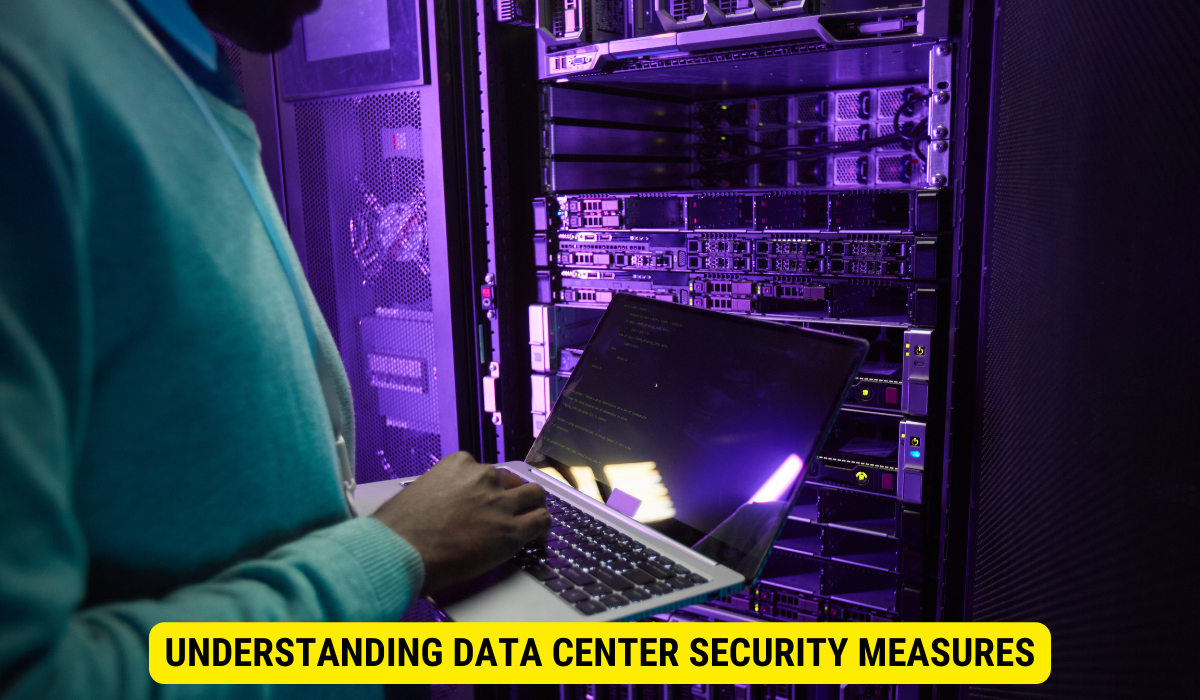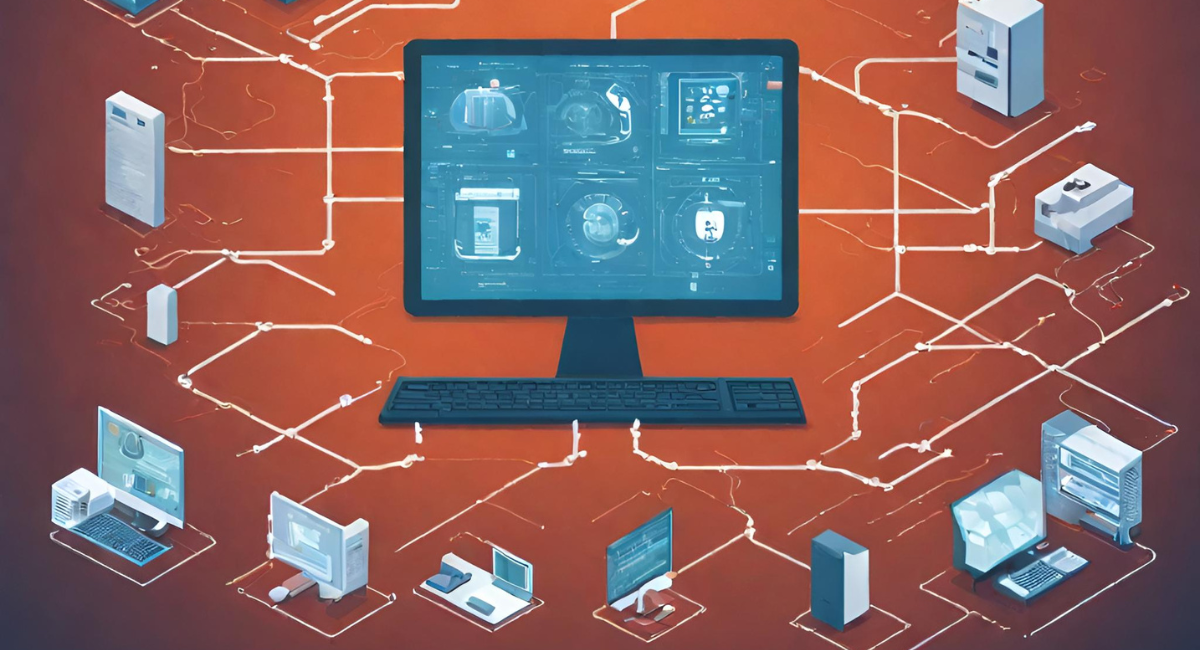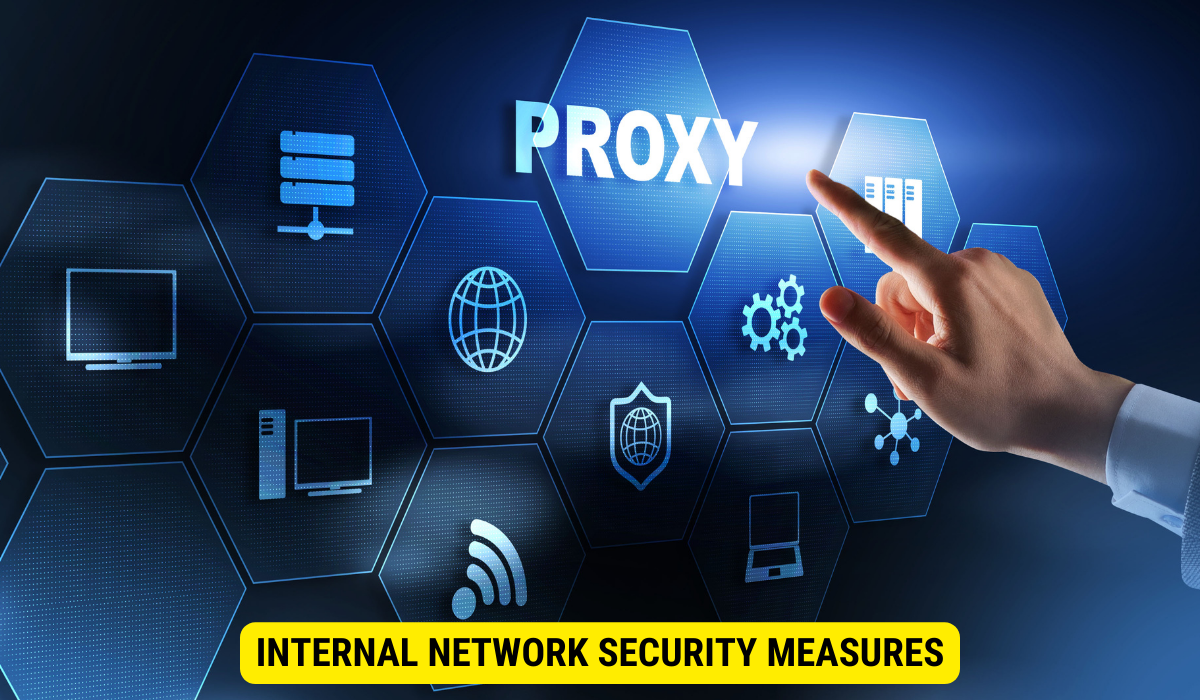The primary security measure typically found inside and outside a data center facility is access control, encompassing biometric identification, key cards, and PIN codes to restrict unauthorized entry.
Data centers are crucial for storing and processing vast amounts of data. With the increasing reliance on technology and the rise in cyber threats, data center security has become a top priority for organizations. Understanding the various security measures employed within and around data centers is essential in ensuring the integrity and confidentiality of sensitive information.
Understanding Data Center Security Measures

Data center security is vital in safeguarding valuable data and maintaining business continuity. Any breach or compromise can result in severe consequences, including financial loss, damage to reputation, and legal implications. Therefore, organizations invest in robust security measures to protect their data centers.
The Importance of Data Center Security
In today’s digital age, data is the lifeblood of businesses. It contains sensitive information such as customer details, financial records, intellectual property, and trade secrets. With the growing frequency and sophistication of cyberattacks, data center security has become a top priority for organizations across industries.
Imagine a scenario where a data center is breached. Hackers gain unauthorized access to the system and steal confidential customer information. This leads to financial loss due to potential lawsuits and regulatory fines and damages the organization’s reputation. Customers lose trust in the company, resulting in a significant decline in business.
Moreover, data breaches can have legal implications. Organizations may be liable for failing to protect customer data, leading to costly legal battles. Compliance with data protection regulations, such as the General Data Protection Regulation (GDPR) and the California Consumer Privacy Act (CCPA), is crucial to avoid legal consequences.
Key Components of Data Center Security
Data center security encompasses multiple layers of protection, both physical and technological. These components work harmoniously to create a comprehensive security framework.
Physical security measures include controlled access systems, surveillance cameras, and security guards. Access to data centers is restricted to approved personnel only, with strict identification and authentication protocols in place. Surveillance cameras monitor the premises 24/7, ensuring any suspicious activity is captured and reported. Security guards are stationed at entry points to deter unauthorized individuals from entering the facility.
Technological security measures involve firewalls, intrusion detection systems (IDS), and encryption. Firewalls are a barrier between the data center and external networks, filtering out malicious traffic and preventing unauthorized access. IDS continuously monitors the network for suspicious activity, alerting security personnel in real-time. Encryption ensures that data is securely transmitted and stored, making it unreadable to unauthorized individuals.
Another crucial component of data center security is redundancy and disaster recovery. Redundancy ensures that backup systems and infrastructure are in place to minimize downtime in a security breach or natural disaster. Disaster recovery plans outline the steps to be taken to restore operations and recover data in the event of a catastrophic event.
Regular security audits and assessments are conducted to identify and address vulnerabilities promptly. This proactive approach helps organizations stay one step ahead of potential threats and ensures continuous improvement of data center security.
To sum up, the significance of data center security is undeniable in the contemporary digital environment. Organizations must allocate resources to solid security protocols to defend their invaluable information and ensure uninterrupted business operations. By introducing a blend of physical and technological safety elements, assuring backup and disaster recovery mechanisms, and performing routine security evaluations, organizations can establish an all-encompassing security infrastructure to shield their data centers from prospective hazards.
Physical Security Measures in Data Centers
Data centers are critical in storing and processing vast amounts of sensitive information. To ensure the protection of this data, physical security measures are implemented to safeguard the facility from unauthorized access and potential threats. Let’s take a closer look at some of the key physical security measures employed in data centers:
Access Control Systems
An integral part of data center security is access control systems. These systems restrict unauthorized entry by employing biometric identification, key cards, and PIN codes. Biometric identification, such as fingerprint or iris scanning, provides a highly secure method of verifying an individual’s identity. On the other hand, key cards are commonly used to grant access to authorized personnel. These cards can be programmed to allow entry to specific areas within the data center, ensuring that only those with the necessary clearance can access sensitive information. PIN codes are another layer of security, requiring individuals to enter a unique code to gain entry. By implementing access control systems, organizations can ensure that only authorized personnel have access to the facility, minimizing the risk of unauthorized access.
Surveillance Systems
Surveillance systems are crucial for monitoring the data center premises and detecting suspicious activities or unauthorized access attempts. Closed-circuit television (CCTV) cameras are strategically placed throughout the facility, providing comprehensive coverage of critical areas. These cameras capture high-quality video footage, which security personnel can monitor in real time or store for later review. In addition to CCTV cameras, motion sensors detect movement within restricted areas. These sensors can trigger alarms, alerting security personnel to potential security breaches. By having surveillance systems in place, data centers can effectively monitor their premises, deter potential intruders, and provide valuable evidence in case of security incidents.
Security Personnel and Procedures
Data centers often employ trained security personnel responsible for maintaining physical security. These professionals undergo rigorous training to handle various security scenarios and are equipped to respond to any emergencies. Security personnel patrol the premises, ensuring all areas are secure and free from potential threats. They also monitor the surveillance systems, promptly addressing suspicious activities or breaches. In addition to security personnel, data centers implement strict security procedures to reinforce physical security measures further. These procedures may include visitor registration, where individuals must provide identification and state their purpose for visiting. Escort policies may also be in place, ensuring visitors are always accompanied by authorized personnel. Data centers can enhance their physical security posture and mitigate potential risks by combining trained security personnel with robust security procedures.
Technological Security Measures in Data Centers
Data centers are crucial in storing and managing vast amounts of sensitive information. With the increasing number of cyber threats and unauthorized access attempts, it is essential to implement robust security measures to protect data centers and their valuable data. Technological security measures, such as network security systems, firewalls, intrusion detection systems, data encryption, and authentication mechanisms, are employed to ensure the safety and integrity of the data.
Network Security Systems

Network security systems are an essential component of data center security. They provide a comprehensive defense against various cyber threats and unauthorized access attempts. Robust firewalls act as a first line of defense, monitoring and controlling incoming and outgoing network traffic. They inspect each packet of data, analyzing its source and destination, and determine whether it should be allowed or blocked based on predefined security rules.
Intrusion detection systems (IDS) are another crucial element of network security systems in data centers. These systems continuously monitor network traffic, analyzing patterns and behavior to identify suspicious activities. IDS can detect various attacks, including malware infections, unauthorized access attempts, and network anomalies. Once an intrusion is detected, the system can trigger alerts or take immediate action to mitigate the threat.
Virtual private networks (VPNs) are also commonly employed in data centers to establish secure and encrypted connections between remote users and the data center network. VPNs ensure that data transmitted between the user and the data center remains confidential and protected from interception.
Firewalls and Intrusion Detection Systems
Firewalls and intrusion detection systems offer a multi-layered defense strategy for data center security. Firewalls serve as a protective shield between internal networks and external dangers, while intrusion detection systems scrutinize network activity for indications of unauthorized entries or harmful actions.
Firewalls evaluate inbound and outbound network activities, thwarting harmful or unpermitted endeavors. They employ packet scrutiny, state-aware checks, and application-based filtering to ensure only genuine and approved traffic navigates through. With the adoption of rigorous security guidelines and stipulations, firewalls deter unsanctioned entries and fortify the data center’s network foundation.
On the other hand, intrusion detection systems assess network tendencies and operations to spot and counter possible risks. Using sophisticated patterns and adaptive learning methodologies, they pinpoint irregularities in network activity, such as atypical data-sharing behaviors or questionable connectivity efforts. When a breach is identified, the system can initiate notifications and act swiftly to counteract the risk, for instance, by blocking the originating IP or segmenting the compromised network section.
Data Encryption and Authentication
Data encryption is a crucial security measure employed in data centers to protect the confidentiality and integrity of stored data. Encryption techniques ensure that even if data gets compromised, it remains unreadable and unusable without the decryption key. Data centers use strong encryption algorithms, such as Advanced Encryption Standard (AES), to encrypt sensitive data at rest and in transit.
Beyond encrypting data, robust verification methods confirm the identities of individuals trying to access information. Many data centers employ Multi-factor Authentication (MFA) to add an enhanced security layer. Before granting data access, MFA demands that users offer several identification forms, like a password, biometric scan, or a unique code. This means that even if one authentication method is breached, unauthorized access remains challenging.
Moreover, data centers have rigorous control measures for access and systems to manage users, ensuring data is accessed only by approved individuals. Role-based Access Control (RBAC) is frequently utilized to allocate distinct permissions to varying user roles, restricting access to confidential information based on specific job roles and necessities.
To wrap up, technological safety solutions are essential in defending data centers and the precious data they house. Systems for network protection, firewalls, systems to detect intrusions, data encryption techniques, and authentication processes collectively form a multi-faceted shield against digital risks and unwanted access efforts. By deploying these strategies, data centers can vouch for the protection, consistency, and privacy of the data they oversee.
Security Measures Commonly Found Inside Data Centers
Server Security Measures
Servers are the heart of data centers, and securing them is paramount. Server security measures include regular software patching and updating, employing intrusion prevention systems, and continuously monitoring server performance to detect any potential vulnerabilities.
Data Storage Security Measures
Data storage security involves various measures to protect the vital information stored within data centers. This includes data redundancy and backups, implementing access controls to limit data access based on user roles, and encryption techniques to safeguard the stored data.
Internal Network Security Measures

The internal network of a data center requires stringent security measures to prevent unauthorized access or tampering. Network segmentation, traffic monitoring, and intrusion prevention systems help ensure that sensitive data remains secure within the internal network.
Key Takeaways
- Access control is a critical measure implemented within and around data centers using biometrics, key cards, and PIN codes.
- Surveillance systems like CCTV cameras provide 24/7 monitoring, adding an extra layer of security.
- Technological measures, including firewalls and intrusion detection systems, safeguard against cyber threats.
- Data encryption ensures the confidentiality of stored data, making it unreadable without a decryption key.
- Regular security audits are vital to identify and address vulnerabilities promptly.
FAQs
What is the main security measure found both inside and outside data centers?
The main security measure is access control, which uses biometrics, key cards, and PIN codes to prevent unauthorized entry.
Why is physical security crucial for data centers?
Physical security prevents unauthorized access, safeguards sensitive data, and ensures the integrity of stored and processed information.
How do surveillance systems enhance data center security?
Surveillance systems, such as CCTV cameras, monitor data center premises 24/7, detecting suspicious activities and providing evidence during security incidents.
What is the role of technological security measures in data centers?
Technological measures like firewalls, intrusion detection systems, and encryption protect data from unauthorized access and maintain its confidentiality from cyber threats.
Why are regular security audits essential for data centers?
Regular audits identify vulnerabilities, ensuring continuous improvement in security and staying ahead of potential threats.
Conclusion
In conclusion, data center security is a multi-faceted approach that combines physical and technological measures to protect valuable data. From access control systems and surveillance cameras to network security systems and encryption techniques, data centers employ various security measures to mitigate the risks associated with cyber threats. By implementing these measures, organizations can safeguard their data and ensure uninterrupted operations inside and outside data center facilities.
